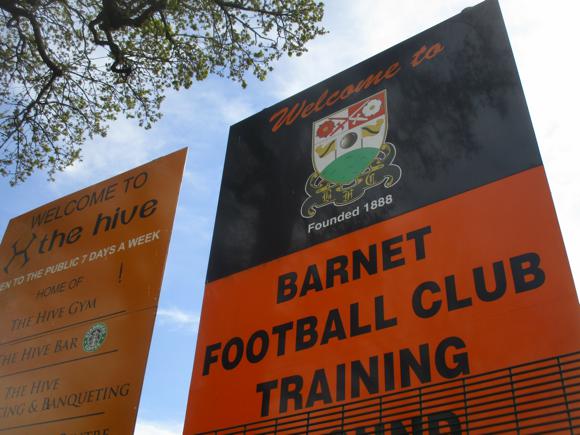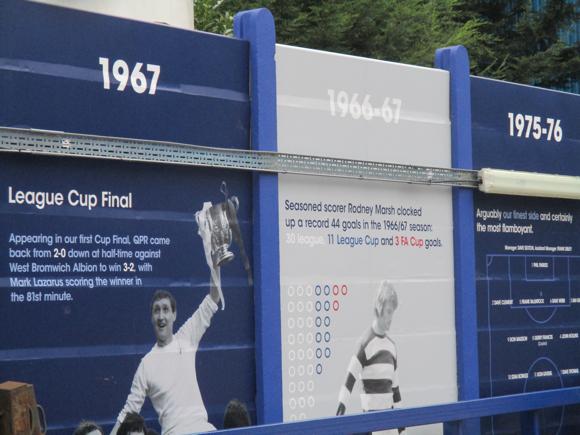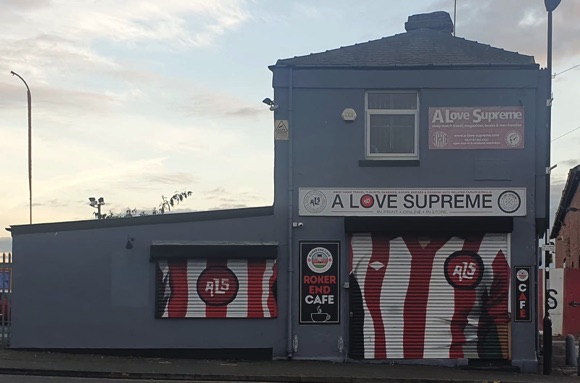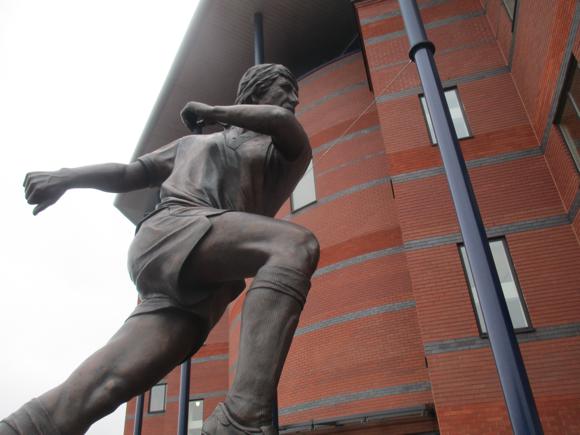A fan’s guide – the club from early doors to today
One man shaped the destiny of Wycombe Wanderers: Martin O’Neill. When the High Wycombe club hired the former Nottingham Forest European Cup winner for his first main managerial job in 1990, the horizons changed.
Pre-O’Neill, Wanderers were a non-league side at a quaint Victorian ground with a sloping pitch. By the time he left five years later, they were in the Football League, looking at the second tier and playing at a neat new-build.
No wonder then, that when his contemporary successor Gareth Ainsworth, achieved a historic promotion to the Championship for the Chairboys in 2020, O’Neill was the first to congratulate him. Both men are fully aware of what it means to challenge clubs with far bigger budgets and win.

Opened the same year of O’Neill’s arrival, 1990, Adams Park was named after another seminal figure. Captain of the Wanderers side that lifted Spartan League titles just after World War I, Frank Adams went into real estate after his playing career.
Formed in 1887, the club had been based at The Rye, an expanse of green by the railway line. The Chairboys, as they came to be known, then moved to Spring Meadow. Leaving to make room for more railway, the club agreed the rental of Loakes Park with Lord Carrington, owner of the surrounding estate. Adams, used his business connections with Carrington to buy Loakes Park and donate it to the club.
The first game at Loakes Park had been Wycombe’s FA Cup debut in 1895. Soon after ownership changed to the club’s name, it hosted a crowd of nearly 16,000 for an FA Amateur Cup tie with St Albans City in 1950.
Winning the trophy in 1931 had been the highlight in the club’s history – until a FA Cup tie with Middlesbrough in 1975, when Isthmian League champions Wycombe famously held a side featuring internationals Graeme Souness and goalkeeper Jim Platt to 0-0. A solitary penalty by England cap David Armstrong settled the replay at Ayresome Park.
Wanderers joined the Football Alliance, forerunner of the Conference, in 1985. Martin O’Neill came to a club that was outgrowing its status and its surroundings.

Inheriting players such as the industrious Scots midfielder Dave Carroll, a vital cog in Wycombe’s ascent to league status, O’Neill brought a new professional attitude to the century-old club.
Wycombe bade farewell to Loakes Park with a friendly against an all-star XI, including George Best, in 1990. That August, O’Neill pulled strings to get Brian Clough’s Nottingham Forest as opponents for the opening match at Adams Park.
By the end of that season, Wycombe were at Wembley, beating Kidderminster Harriers to win the FA Trophy – a cup donated by Frank Adams when the tournament was introduced in 1974.
In 1992, only nine goals separated the Chairboys from a place in the Football League, claimed by champions Colchester. One season later, goals from Keith Scott pushed Wycombe 15 points ahead of second-placed Bromsgrove and into the League.
Rejecting offers from former club Forest, the Ulsterman led Wanderers up the Division Three table, a late-career cameo from former Blackburn star Simon Garner the factor in the run to the play-off final at Wembley and subsequent 4-2 win over Preston.

After back-to-back promotions, the Wycombe wagon was stopped by league restructure. With fewer play-off spots available in 1994-95, the club’s sixth-placed finish wasn’t enough. The high-water mark for Wycombe’s league campaigns, this was also the last stop for O’Neill at Adams Park.
Leaving for later high-profile jobs at Celtic and Ireland, the Ulsterman passed the baton to Alan Smith. League campaigns became a struggle for survival, and not always successful.
In the FA Cup, Wanderers had a heroic run in 2000-01 that produced a bizarre moment of magic. Belfast-born Ghanaian Roy Essandoh, hired pro bono after a desperate Ceefax appeal from manager Lawrie Sanchez, headed the last-minute winner at Leicester City. The only goal Essandoh scored for Wycombe – in fact, all season, anywhere – it put Wanderers into a semi-final with Liverpool. Sanchez, who had scored the goal to beat Liverpool in the 1988 FA Cup Final, inspired his men to hold out until the 78th minute. With the score at 2-0, and substitute Dave Carroll granted an appearance late in his career, Wanderers got a goal back but it wasn’t enough.

After becoming a plc in 2004, replacing its membership-run structure, Wycombe hired Paul Lambert as manager in 2006. The results were immediate, vital goals from Jermaine Easter taking Wanderers on a League Cup run. Another came in the semi-final against Chelsea, a 1-1 draw in front of nearly 10,000 at Adams Park. Easter then missed an easy chance at Stamford Bridge when the home side were only 1-0 up and Wycombe’s moment had gone.
Lambert then took Wycombe to the League Two play-offs in 2008, and an unlucky defeat to Stockport. Now under sole ownership of loan mogul Steve Hayes, with talk of a move to Wycombe Air Park, the club struggled in League One and settled into the fourth flight.
Off the pitch, a supporters’ trust bought Wycombe from the unpopular Hayes in 2012 and ex-captain Gareth Ainsworth was given the manager’s job.
A close brush with relegation to the Conference in 2014 was followed by a bright campaign at the top of the League Two table. Stuttering at the end, Wycombe gave Southend a memorable game in the play-off final at Wembley. Leading until the 122nd minute, the Chairboys fell to a last-gasp equaliser then goalkeeping heroics from Southend’s Daniel Bentley in the shoot-out, Sam Wood the villain of the piece.
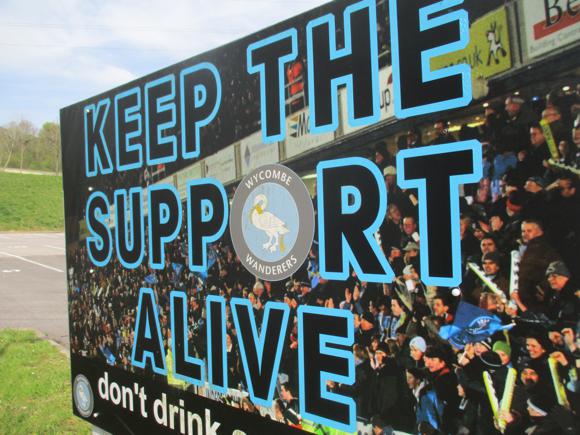
Ainsworth’s men then worked miracles in a heart-stopping FA Cup tie at Tottenham Hotspur in 2017, leading 2-0 thanks to a brace from returning veteran striker Paul Hayes before going down 4-3 to a last-minute winner, and one season later gained that elusive promotion to League One. Another veteran, the larger-than-life figure of Adebayo Akinfenwa, grabbed the lion’s share of the goals.
Surviving their first season in the third tier, Wycombe then surprised everyone by leading the division up to Christmas 2019, Akinfenwa again a regular name on the scoresheet. Having played fewer games than their fellow promotion challengers when shutdown was imposed, thus gaining a better points average, the Chairboys were granted a play-off spot for a place in the Championship. High-scoring Welsh left-back Joe Jacobson then converted a late penalty at a sadly empty Wembley to send Wanderers into dreamland, local rivals Oxford defeated 2-1.
As former manager Martin O’Neill and football neutrals rushed to praise Ainsworth’s achievement with such a limited squad, the gulf in budget and experience soon told once the Chairboys tackled the likes of Norwich and Watford one rung down from the Premier League. Losing their first seven games straight and drawing far too many others, Wycombe sank straight down to League One, their heads held high and only a point from safety.







Ground Guide
The field of dreams – and the stands around it







Set between dense woodland and an industrial estate, Adams Park was opened in 1990 and has twice been expanded since. Officially removed from the Green Belt zone in 2008, thus increasing its land value 200fold, it was the subject of a potential sale when Steve Hayes was Wycombe owner.
With both club and stadium now in the dedicated hands of a supporters’ trust, Adams Park should be Wycombe’s home for a fair while yet.
Though a trek from town, the ground is a convivial place to watch a football match, well organised and surrounded by greenery. At just under 10,000 capacity, standing only in the home Whites Beaconsfield West Stand, the rest seated, it’s also a nice size.
Away fans are allocated the Lords East Stand behind the opposite goal. Along the sidelines run the two-tier Frank Adams Stand, also known as Woodlands, and the PreSonus North Stand, still in place from 1990, and containing the club offices and shop.
getting there
Going to the ground – tips and timings


With the stadium a little too far to walk from the station, the best solution is Arriva bus 32 that leaves High Wycombe bus station every 20mins (every 30mins eve & Sun) and takes 10mins to reach Sands Hour Glass PH nearest the ground. This is a 10-15min walk to Adams Park but, given the traffic along Lane End/Hillbottom Road, drivers won’t be going much quicker. Also setting off from High Wycombe bus station, the infrequent 48 stops closer to Adams Park, at Sands Hillbottom Road, but only the 1.05pm and 2.15pm would be convenient for a Saturday kick-off, and the 5.45pm for a weekday.
A taxi from the train station would be around £10 and be stuck in the same traffic jam for the last part of the way.
The sat nav code for Adams Park is HP12 4HJ. Parking at the stadium is limited to officials and seasonal pass-holders only. The club operates a P&R service with Motts Travel, which lays on match-day minibuses from Cowleaze Field (HP14 3BA) near West Wycombe Cricket Club. Drivers should turn left into Trowbridge Lane after West Wycombe village, where they pay a £5 fee and are directed to a parking space. Buses run every 15mins from 1pm-2.45pm (for 3pm kick-offs) and take 5-10mins to drop off at the bottom of Hillbottom Road by the stadium. They then depart from the same spot, 4.45pm-6.15pm.
getting in
Buying tickets – when, where, how and how much


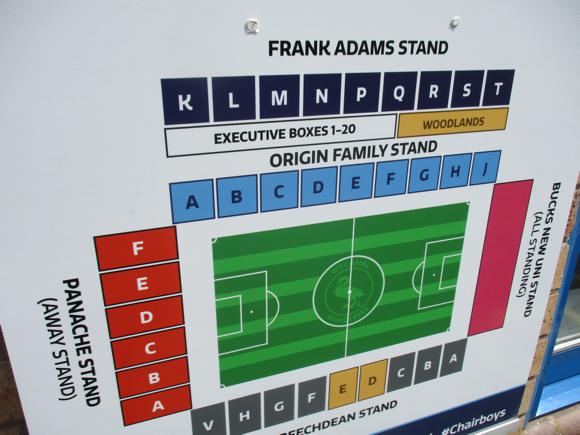
The club office for advance ticket sales (Mon-Fri 10am-3pm) is behind the Beechfield Stand across from the car park. There are also sales by phone (01494 472 100, Mon-Fri 9am-5pm) and online, too. Sales also take place on match days – away fans should head to Ticket Office 1 or there’s a collection outlet alongside for pre-booked tickets. Direct all enquiries to tickets@wwfc.com.
Match-day prices are £28 for a seat in the Frank Adams Stand/away Lords East Stand, £25 for over-65s, £23 for 22-25s, £22 for 19-21s, £17 for 12-18s and £12 for under-12s. It’s £2-£4 cheaper in the PreSonus North Stand. Home fans pay £20 to stand in the Whites Beaconsfield West Stand, discount prices £10-£17, with no reductions for under-12s, who are charged £3 for a seat in the Origin Family Stand.
what to buy
Shirts, kits, merchandise and gifts


Behind the Beechfield Stand, the club shop (Mon-Tue, Thur-Fri 10am-5pm, match days from 10am) stocks Wycombe’s instantly recognisable home kit of light-and-dark-blue quarters, away tops of orange with white sleeves, and third choice red-and-white quarters.
Half-zip training tops show maps of High Wycombe while revered manager (and rock frontman) Gareth Ainsworth is celebrated with the Wild Thing I… Think I Love You T-shirt.
Where to Drink
Pre-match beers for fans and casual visitors





The main pre-match – in fact, the only pre-match pub – is the Hour Glass, near the bus junction that shares its name. Comprising a long bar, tables outside and a beer garden out back, it contains a number of TVs for pre-match previews and does pub food as well, although the kitchen might get too busy on match days. Away fans are welcome, although not large, rowdy groups.
It’s a 15min walk to the ground, along Lane End/Hillbottom Road where traffic will probably be stalled anyway.
There are several outlets at the ground, including a beer marquee for away fans. Away fans should also be welcome in the Scores bar behind the Beechfield Stand, a standard bar dotted with framed photos of great Wycombe moments.
The Vere Suite is home fans only, the Woodlands Suite is for members.







